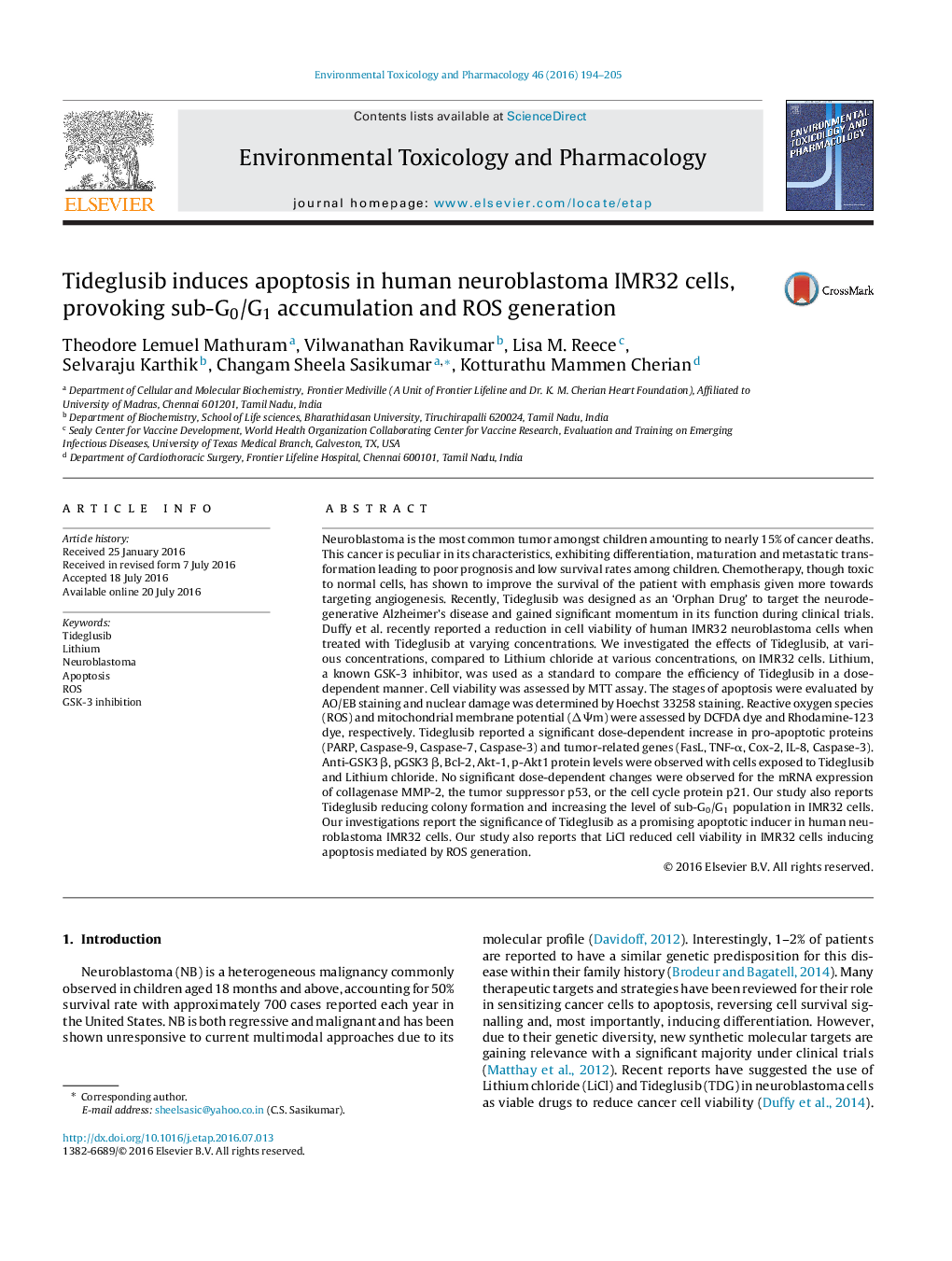| کد مقاله | کد نشریه | سال انتشار | مقاله انگلیسی | نسخه تمام متن |
|---|---|---|---|---|
| 2582830 | 1561698 | 2016 | 12 صفحه PDF | دانلود رایگان |

• LiCl, TDG induces nuclear damage in IMR32 neuroblastoma cancer cells
• LiCl, TDG increased the level of sub-G0/G1 population in IMR32 cells
• TDG, LiCl upregulated apoptotic proteins (PARP, Caspase-9, Caspase-7, Caspase-3)
• TDG, LiCl upregulated tumor-related genes (FasL, TNF-α, Cox-2, IL-8, Caspase-3)
Neuroblastoma is the most common tumor amongst children amounting to nearly 15% of cancer deaths. This cancer is peculiar in its characteristics, exhibiting differentiation, maturation and metastatic transformation leading to poor prognosis and low survival rates among children. Chemotherapy, though toxic to normal cells, has shown to improve the survival of the patient with emphasis given more towards targeting angiogenesis. Recently, Tideglusib was designed as an ‘Orphan Drug’ to target the neurodegenerative Alzheimer’s disease and gained significant momentum in its function during clinical trials. Duffy et al. recently reported a reduction in cell viability of human IMR32 neuroblastoma cells when treated with Tideglusib at varying concentrations. We investigated the effects of Tideglusib, at various concentrations, compared to Lithium chloride at various concentrations, on IMR32 cells. Lithium, a known GSK-3 inhibitor, was used as a standard to compare the efficiency of Tideglusib in a dose-dependent manner. Cell viability was assessed by MTT assay. The stages of apoptosis were evaluated by AO/EB staining and nuclear damage was determined by Hoechst 33258 staining. Reactive oxygen species (ROS) and mitochondrial membrane potential (ΔΨm) were assessed by DCFDA dye and Rhodamine-123 dye, respectively. Tideglusib reported a significant dose-dependent increase in pro-apoptotic proteins (PARP, Caspase-9, Caspase-7, Caspase-3) and tumor-related genes (FasL, TNF-α, Cox-2, IL-8, Caspase-3). Anti-GSK3 β, pGSK3 β, Bcl-2, Akt-1, p-Akt1 protein levels were observed with cells exposed to Tideglusib and Lithium chloride. No significant dose-dependent changes were observed for the mRNA expression of collagenase MMP-2, the tumor suppressor p53, or the cell cycle protein p21. Our study also reports Tideglusib reducing colony formation and increasing the level of sub-G0/G1 population in IMR32 cells. Our investigations report the significance of Tideglusib as a promising apoptotic inducer in human neuroblastoma IMR32 cells. Our study also reports that LiCl reduced cell viability in IMR32 cells inducing apoptosis mediated by ROS generation.
Figure optionsDownload as PowerPoint slide
Journal: Environmental Toxicology and Pharmacology - Volume 46, September 2016, Pages 194–205